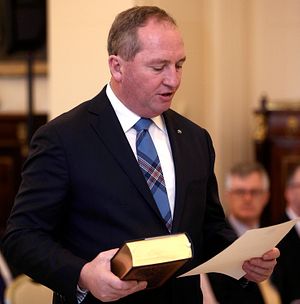There’s a very Australian lexicon when it comes to the country’s internal party politics When the cry goes out that “it’s on!” you know that someone is about to get “knifed.” Knifing is when a party leader is challenged for their position by another member of parliament (MP). It happens when a party is in opposition and a leader is seen to lack traction, but it also often happens when the party is in power. Having secured the support of the general public is no guarantee of your support within the party.
Since 2008 these leadership challenges at the federal level have become more frequent. Within the Labor Party, Julia Gillard knifed Kevin Rudd, who in turn knifed Gillard back. In the currently ruling Liberal Party, Malcolm Turnbull knifed Brendan Nelson, Tony Abbott then knifed Turnbull, Turnbull knifed Abbott back, Peter Dutton tried to knife Turnbull and missed, but did enough damage to allow Scott Morrison to become prime minister.
Part of the problem is that two decades into the 21st century Australian political parties are still built on ideas formed in the early to mid-20th century. The rapid pace of change in this new century means that tensions within parties have become more pronounced, but the mechanisms to handle new issues, demographic changes, and reframed constituencies do not exist. The result is a hostile battle for power within parties by factions whose common causes have frayed.
Last week the National Party stepped into this very Australian political tradition, with former leader Barnaby Joyce successfully challenging Michael McCormack for the party’s leadership. Joyce was forced to step down from the party leadership three years ago after an affair with a former member of his staff, but he made no secret that he wanted the job back. It was just a matter of sharpening his knives and finding the right moment.
The National Party is a unique party in Western politics. Its purpose is two-fold: to serve the interests of rural Australia, and to be the junior partner to the Liberal Party, with the two existing federally in a permanent coalition (it gets more complicated at the state level). Joyce returning to the National Party leadership means that he will also become the country’s deputy prime minister, a position that gives him considerable weight within the cabinet.
It is this weight inside the cabinet that sparked the dust-up, as Joyce and his supporters within the party felt that McCormack wasn’t utilizing his role effectively. This perception intensified when Morrison traveled to Cornwall for the G-7-plus meeting and McCormack assumed the role of acting prime minister. Elements within the National Party felt that Morrison did not push back hard enough against pressures from the G-7 to commit to a target of net zero emissions by 2050. These elements also felt that McCormack was lacking the ability to influence the senior coalition partner.
This is the 21st century tension at the heart of the National Party. The party was founded to represent the interests of the agricultural industry, yet has now been fully captured by the fossil fuel lobby. Farmers and small rural towns may be their constituents – most of them so rusted on to the party that in many seats the Nationals have no serious challengers – but coal mining has become the party’s paymaster, even if this undermines the interests of farmers. The coal industry is aware that capturing the National Party gives them an effective veto over government policy when the Coalition is in power.
Yet this creates an incredible headache for the Liberal Party. Although the party also has several MPs who are also suspicious toward a more ambitious approach to emission reductions, an overwhelming number of Australians are not. Added to this, because the Liberal Party will always hold the outward-facing ministries of foreign affairs, defense, and of course, the prime ministership when in power, they will be subject to both external pressures and external responsibilities. In particular, Australia’s responsibilities to Pacific Island countries create added pressure to act on climate issues.
The effect of this headache for the Liberal Party is that it is now coming under threat in its previous urban strongholds from independent candidates who are making action on climate change a central feature of their political campaigns. Former Prime Minister Tony Abbott lost his seat – one of the wealthiest in Australia – to such a candidate at the 2019 election. These “wealth belt” seats on Sydney’s north shore and in Melbourne’s inner east can no longer be taken for granted by the Liberal Party, as the primary 21st century issue of climate change realigns Australia’s political constituencies.
The fear for the Liberal Party is that the return of Barnaby Joyce to the leadership of the National Party will accelerate this trend. That, in turn, could create further tensions within the Coalition as the parties head toward an election – to be held before mid-2022 – with only a slender majority in the House of Representatives.

































